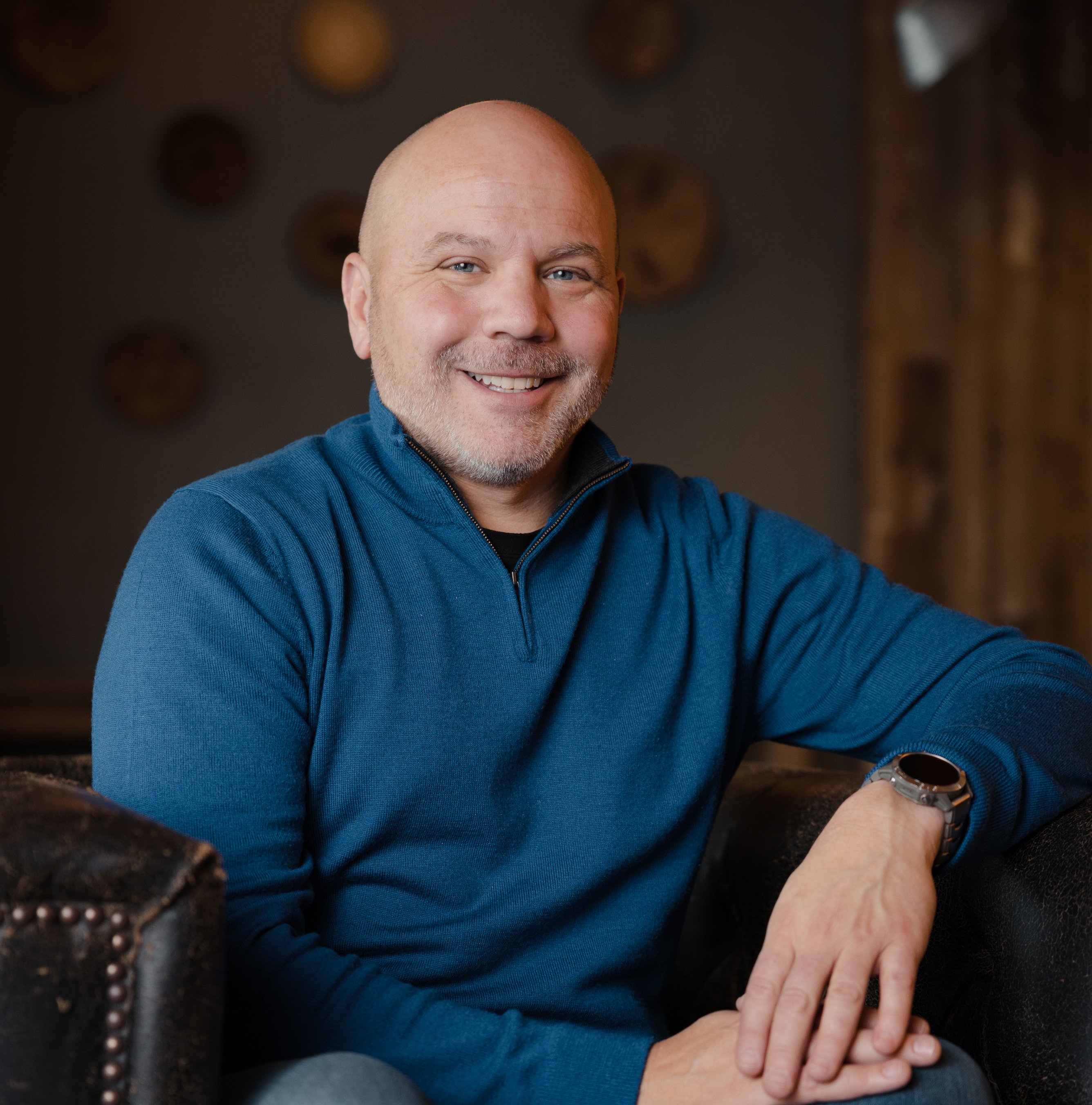Accountability Chart Deep Dive: Aligning Roles to Drive Execution
In the entrepreneurial world, clarity isn’t a luxury. It’s a necessity, especially when it comes to who’s doing what. That’s where the EOS® Accountability Chart™ becomes not just a tool, but a game-changer. When everyone knows their lane and how success is defined, we eliminate the guesswork that slows execution. Without it, we risk confusion, dropped balls, and the kind of silent dysfunction that drains momentum from even the most promising teams. The EOS Accountability Chart sets the stage for consistent performance and healthy growth.
What Makes the EOS Accountability Chart Different?
At first glance, it might look like an Org Chart, where roles and titles within an organization are mapped out. But make no mistake, the Accountability Chart isn’t about titles or hierarchy. Instead, it focuses on functions, not people, and lays out the key seats that your organization needs to execute well today but also for growth. Think of it as a structure-first, people-second approach: we define what the organization needs before assigning who’s going to fill the roles.
No dotted lines. No ambiguity. Just clarity.
When we build it out in session, we strip away the politics, tenure, and even titles. It’s a blank canvas for your business’s future structure. We ask, "How far out can you see as a team to support the next 3 months, 6 months, 1 year and beyond. Ultimately we want to have an Accountability Chart that supports our The 1-Year Plan, The 3-Year Picture, and maybe even The 10-Year Target?"
One of my clients, a software company scaling toward their Series B, struggled with confusion between Sales and Customer Success. We restructured the Accountability Chart to create distinct seats for "Client Acquisition" and "Client Retention." Immediately, it shifted their tension to traction.
Why Structure First, People Second Matters
Most organizations start by hiring great people and then try to fit them into roles. EOS flips that approach. During Focus Day®, we spend 3+ hours building a chart that maps out where the organization is headed in the next 6-12 months. That means leaders must set aside ego and emotion to architect the right structure, even if that means building a seat they won’t sit in.
I’ve been in sessions where a founder realizes they’re no longer the right person to lead Sales, or Operations, or Finance. It’s humbling. But it’s also freeing. I like to remind teams that everyone does everything until we can specialize. Often the founder/visionary is the last to get to specialize.
Aligning Seats to Your Company Vision to Fuel Growth
One of my favorite EOS related phrases to share is, “the answers are in the tools.” The Accountability Chart isn’t just a tool for defining responsibilities — it’s a blueprint for achieving your company’s Vision. Every seat on the chart should directly support where the business is headed, not just where it is today. When we align seats to the long-term vision, we ensure that each role contributes to strategic goals and that we're not just filling positions, but building capacity for growth. Often when we have been struggling in IDS with a growth issue that links to the Vision/Traction Organizer®, I bring up the Accountability Chart, and we find there is a lack of alignment around the seats we have today and where we are investing next in hiring to get to our goals. The answer is in the tools.

How Does the Accountability Chart Drive Execution?
The chart outlines clear responsibilities for each seat. That clarity eliminates confusion, increases accountability, and helps everyone understand who owns what. From there, we use the People Analyzer™ to ensure we have the Right People in the Right Seats, finding those who align with Core Values and GWC™ their roles (Get it, Want it, Capacity to do it).
Once the chart is in place:
- Every Rock has a clear owner.
- Issues get IDS’d by the right people in the right seats.
- Scorecards align with key seat responsibilities.
- Meetings, especially Level 10 Meetings™, run smoother because everyone knows who is accountable for what.
One of my most disciplined clients is a financial services firm. It took awhile, but we revamped their chart around key outcomes instead of legacy titles. One quarter later, they increased Rock completion by 30% exceeding the targeted 80%. Not because they worked harder, but because everyone was clear on what mattered.
Common mistakes when building an Accountability Chart
Even with the best intentions, teams often trip over the same patterns when building or maintaining their Accountability Chart. These common missteps can derail alignment and hinder execution if not addressed head-on.
1. Skipping structure work
One of the most common missteps is starting with people instead of first defining the structure the business needs. When you build the Accountability Chart based on the current team instead of the company’s future needs, you limit your ability to scale. I often tell teams: imagine your ideal organization 12 months from now, without naming a single person. What does the business need? Without this structure-first discipline, you risk placing strong performers in ill-fitting roles and creating inefficiencies that will show up in your Rocks, Scorecard, and ultimately your P&L.
2. Avoiding hard conversations
Building the Accountability Chart sometimes reveals uncomfortable truths: role overlap, misalignment, or a lack of clarity around responsibilities. Some teams avoid those tough conversations and leave vague or shared responsibilities in place. This is a surefire way to breed confusion, stall execution, and erode trust. In one client session, two senior leaders realized they had been "kind of" sharing ownership of Finance for years — and no one had full accountability. Once we made the hard call to separate those responsibilities, things improved dramatically. Clarity requires courage.
3. Treating the chart like it’s fixed
Your Accountability Chart should be a living, breathing representation of where your business is going, not where it’s been. Too often, teams treat it like a one-and-done org chart. In EOS, we update the chart every 90 days, based on where we’re headed next. That might mean splitting a seat, redefining a role, or building out a new function. One of my clients created a new "RevOps" seat after realizing their Marketing and Sales teams were struggling to stay aligned. That adjustment wouldn’t have happened if we hadn’t reviewed the chart during our quarterly session.
Leveraging Technology: How Ninety Helps Map and Update Roles
While the Accountability Chart concept is powerful on its own, its real impact is amplified when paired with the right technology. That’s where Ninety comes in. Built specifically to support teams running on EOS®, Ninety’s platform makes it simple to create, update, and share your Accountability Chart in real-time. You can define seats, document key roles and responsibilities, and assign them to team members with full visibility across the organization.
Making updates to your org chart is easy and collaborative, especially during quarterly and annual planning sessions when structures need to evolve. Combined with other tools like the People Analyzer™, Scorecards, and Vision/Traction Organizer®, Ninety helps bring the entire EOS Toolset to life in a way that’s Shared by All and Followed by All. It’s the digital backbone that makes EOS execution seamless.
What Does Great Look Like?
When built and maintained properly, your Accountability Chart becomes a source of alignment and execution. It gives leaders the space to lead, managers the clarity to manage, and team members the confidence that their contributions matter.
Micromanagement is one of my trigger terms, both because I’ve lived it and watched what it does to a team. EOS is a system of Accountability that enables people to be accountable, and while I’ve never heard someone directly say that they wish to be held accountable, accountability also means that people have the opportunity to perform. Yes, we practice LMA (Leadership + Management = Accountability) so that if people aren’t accountable, we as leaders will hold them to their agreement to their seat.
So leave the uncertainty, pain and misexpectations of who does what, who reports to who, and who is supporting. Let’s get to work and start building your Accountability Chart. Not only is it effective, it's also free. Start building your Accountability Chart today!




